Teaching kids to ski can be way easier - and more fun - when they’re using the right gear. The key? Shorter skis. Long skis are heavy, harder to control, and can frustrate young learners. Shorter options, like Snowfeet MINI KIDS Skates (44 cm) or Skiblades (65 cm), are lightweight, easy to handle, and help kids build confidence faster. Plus, they work with regular winter boots, saving you money on expensive ski gear.
Here’s why shorter skis are a game-changer:
- Better control: Easier to balance and steer.
- Safer learning: Less effort means fewer falls and more fun.
- Faster progress: Kids can focus on skiing, not wrestling with bulky equipment.
Snowfeet’s lineup is designed for kids of all ages and skill levels, with adjustable bindings that grow with them. They’re also compact enough to fit in a backpack, so no more lugging around heavy skis. Starting at $150, they’re a budget-friendly option for families, cutting down on costs while making skiing enjoyable for everyone.
Ready to make skiing a breeze for your kids? Keep reading for the full breakdown of why shorter skis are the way to go and how Snowfeet products can help.
Teach Children Skiing | Episode 1 : Introduction and Equipment
Why Shorter Skis Are Better for Kids
When kids are just starting to ski, dealing with heavy, hard-to-handle equipment can make learning a lot tougher. Shorter skis, being lighter and easier to manage, give young skiers the control they need to actually enjoy their time on the slopes.
1. Better Control and Balance
Shorter skis make a world of difference when it comes to control. Kids don’t have the strength or coordination that adults do, so using shorter skis - like the 44 cm Snowfeet* Skiskates or MINI KIDS models - makes it much easier for them to steer and balance. These skis require less force to make turns, helping kids move naturally and stay steady on their feet. This added control not only makes skiing more enjoyable but also boosts their confidence early on.
"Shorter skis are lighter and easier to handle, making them more maneuverable than longer skis. For beginners, this ease of handling is crucial as it allows for quicker and more precise turns. This responsiveness helps new skiers feel more in control, which is important for building confidence." – Snowfeet Team
2. Safer Learning with More Confidence
Safety isn’t just about helmets and goggles - it’s also about having the right equipment. Shorter skis match a child’s ability level, making them easier to control with less effort. This means young skiers can focus on learning the basics without getting frustrated or tired from wrestling with oversized gear. The simplicity of shorter skis encourages kids to try new moves and progress safely, giving them the confidence to keep going.
3. Faster Learning Process
With shorter skis, even small movements translate into quick responses, making it easier for kids to turn and stop when they need to. This responsiveness creates a smooth learning experience, where kids can focus on mastering the fundamentals instead of struggling with bulky equipment. Early success on the slopes builds excitement and a positive attitude toward skiing, motivating them to practice more. Snowfeet* skis are designed to support this kind of progress, making them a great choice for young learners who want to get the hang of skiing quickly.
Snowfeet* Products Made for Kids
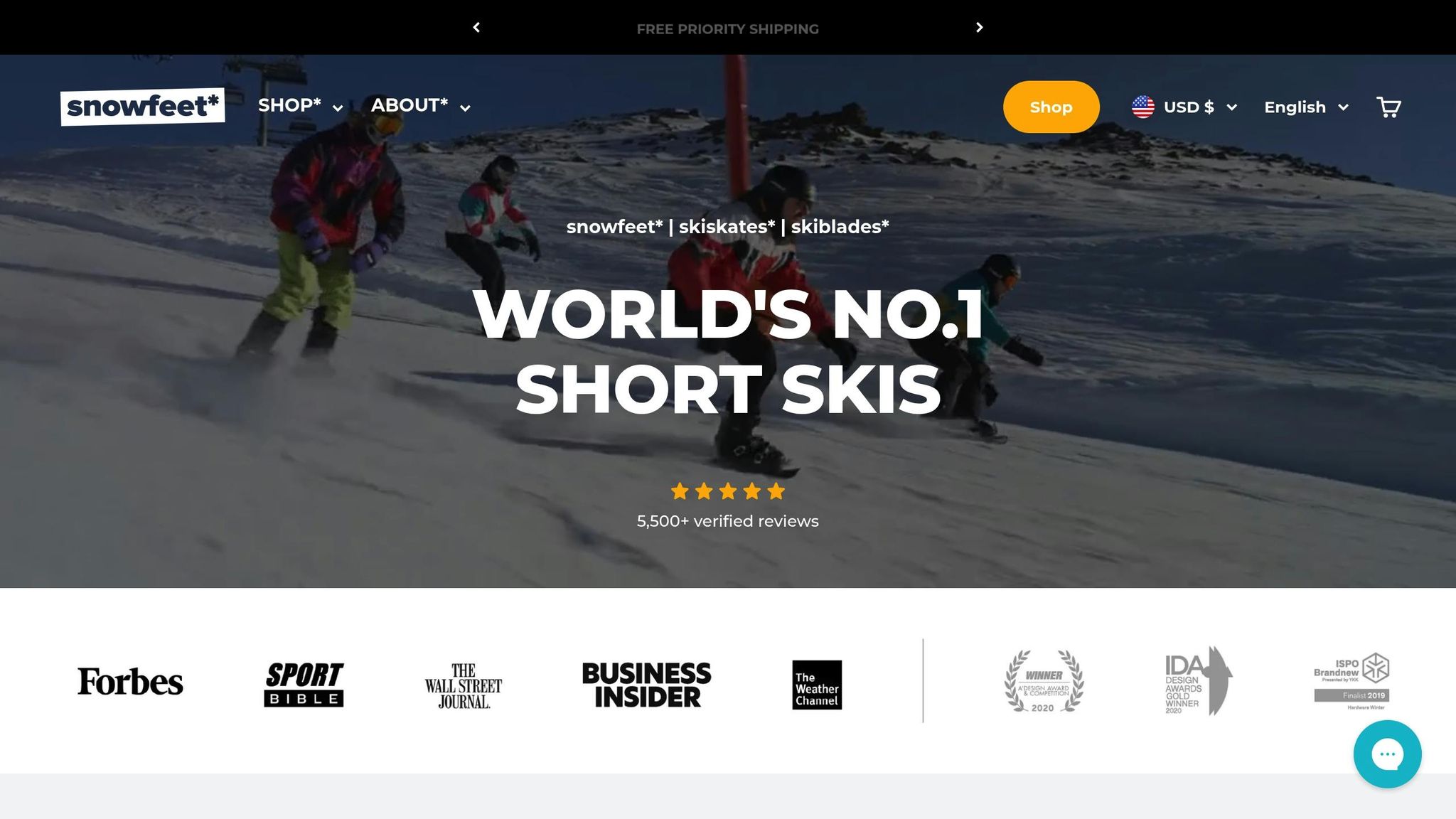
Snowfeet* has a lineup designed specifically for kids, focusing on ease of use, safety, and affordability. These products are tailored to match children's skill levels, eliminating the need to rely on oversized, adult gear.
1. Snowfeet MINI KIDS and Skiskates
The Snowfeet MINI KIDS and Skiskates (44 cm) are perfect for beginners. At just 44 cm, these skis are lightweight and simple to maneuver, making them ideal for young learners. Thanks to their adjustable bindings, they can grow with your child, saving you from frequent upgrades. Even better, they work with regular winter shoes - no need for bulky ski boots or rentals. These compact skis are great for practicing on smaller slopes and building confidence.
2. Snowfeet Skiblades (65 cm, 99 cm, 120 cm)
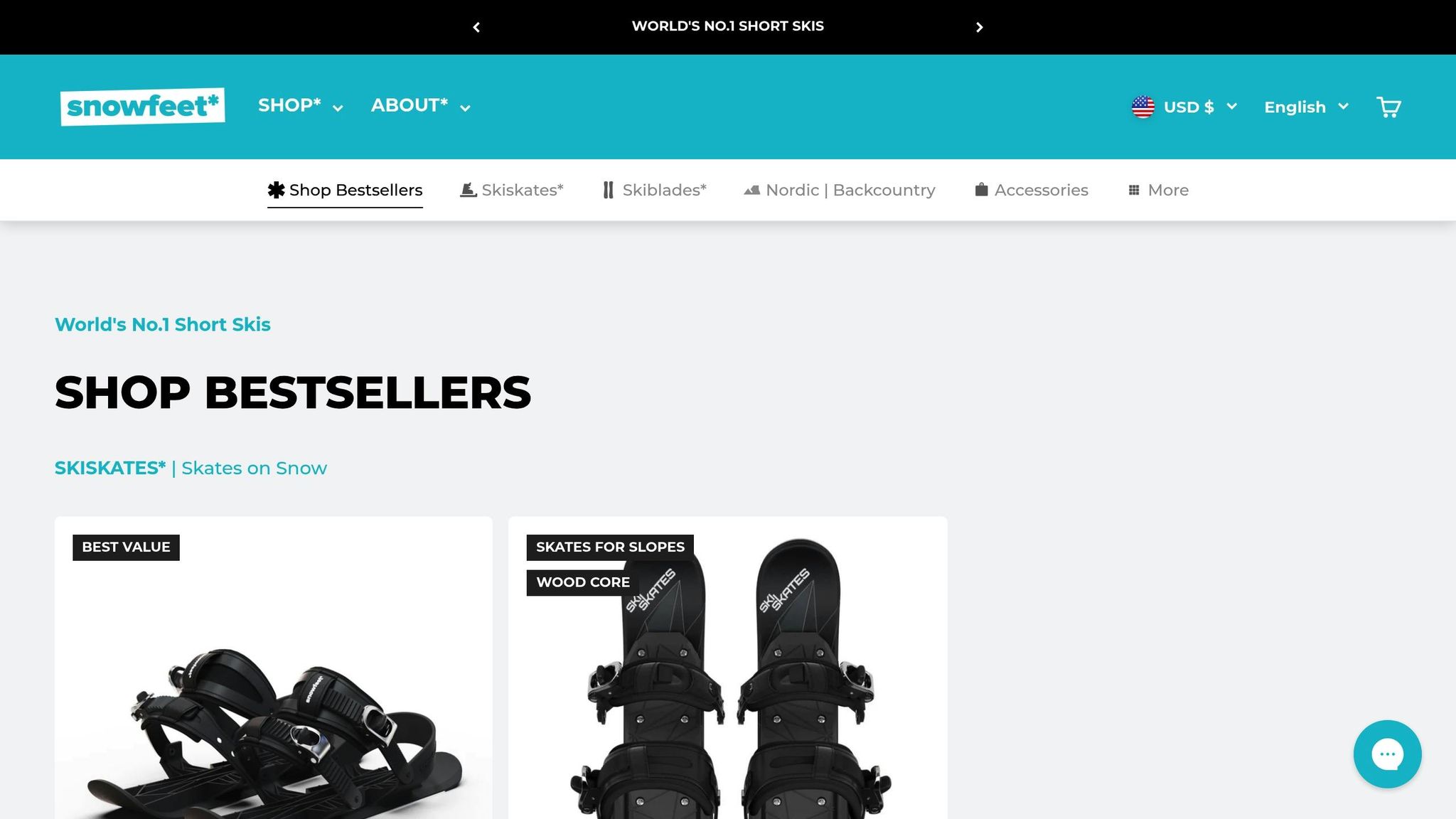
The Snowfeet Skiblades come in three sizes, catering to different age groups and skill levels:
- 65 cm Skiblades: Designed for kids aged 3–11, these are the shortest and lightest option. They feel like skating on snow, helping younger kids develop balance and coordination.
"The shortest snowblades available and are perfect for younger kids or smaller riders. At just 65 cm, these snowblades are incredibly light and easy to control, making them an excellent choice for first-time skiers."
- 99 cm Skiblades: A step up for kids over 11 or those who’ve mastered the basics. These provide more stability while remaining easy to handle.
"For slightly older kids or those who have already gotten the hang of basic skiing, 99 cm snowblades provide a bit more stability while still being easy to handle."
- 120 cm Skiblades: Ideal for older kids with some skiing experience. These offer the most stability and allow for faster rides without the complexity of traditional skis.
"The longest snowblades, typically around 120 cm, are best suited for older kids who have some skiing experience and want to try faster ride."
All Skiblades feature adjustable bindings that grow with your child, making them a long-lasting option. Plus, their lightweight design reduces fatigue, so kids can enjoy longer days on the slopes while improving their skills.
3. Pricing and Family Value
Snowfeet* products are a budget-friendly alternative to traditional ski setups. Snowfeet Mini Ski Skates start at $150, and Skiblades range from $450 to $690. In comparison, traditional ski equipment for kids often exceeds $500 per child.
The adjustable bindings mean these products can last for multiple seasons as your child grows, cutting down on yearly costs. Since they work with regular winter boots, you’ll save hundreds of dollars on specialized gear that kids quickly outgrow. Their compact size also makes traveling easier - just pack them in your regular luggage and skip those extra baggage fees. It’s a smart investment for families who want gear that’s practical, affordable, and helps kids develop their skiing skills.
sbb-itb-17ade95
Snowfeet* vs. Long Skis and Snowboards
When it comes to picking the right gear for kids learning to ski, Snowfeet* products stand out in a few big ways compared to traditional long skis and snowboards. From making learning easier and safer to being super portable and flexible, they offer some real perks. Let’s break it down.
1. Easier Learning and Safety
Long skis can be tricky for kids - they’re bulky and make balancing harder. Snowfeet* products, like the 65 cm Skiblades, are much more compact, which helps kids shift their weight and turn more easily. Snowboards, on the other hand, require a sideways stance that can feel awkward for beginners. Snowfeet* gear keeps things simple with a natural stance, encouraging proper skiing posture and making those first snow experiences less intimidating.
2. Easy Transport and Storage
Let’s talk convenience. Traditional skis are a hassle to lug around - they need big bags or racks for transport. Snowfeet* products? They fit in a backpack. Seriously, you can just toss them in and go. At home, they don’t take up much space either. Whether it’s a closet or under the bed, storing Snowfeet* gear is a breeze. Lightweight models like the 65 cm Skiboards make life so much easier for families who want to skip the headache of managing oversized equipment.
3. Versatile Use in Multiple Settings
Here’s where things get fun. While long skis and snowboards are mostly designed for groomed resort slopes, Snowfeet* products work just about anywhere. Whether it’s a snow park, hiking trail, or even your own backyard, these little wonders let kids practice in all kinds of conditions. Plus, they’re compatible with regular winter boots - no need for special ski or snowboard boots. That means kids can jump into the snow and start having fun without any extra prep time.
How to Pick the Right Snowfeet* Model for Your Child
Choosing the perfect Snowfeet* model for your child comes down to three things: their age, size, and skiing goals. Snowfeet* products are designed to grow with your child’s abilities, offering a lightweight and flexible alternative to bulky traditional skis. Let’s break it down step by step to help you pick the right model, set up bindings, and keep your child comfortable on the slopes.
1. Picking the Right Size and Model
If your child is just starting out - think around 4 years old or still working on their balance - go with the Snowfeet Mini Ski Skates (38 cm). These small, lightweight skates are easy for young beginners to handle, helping them build confidence as they get used to gliding on snow.
Once your child has the basics down and is ready for more control, the Skiskates (44 cm) are a great next step. Designed with a wood core, they offer a solid mix of durability and performance, perfect for kids who are gaining experience.
For more adventurous young skiers, the Skiblades (65 cm) are the way to go. These provide a fantastic balance of control and performance, letting kids explore groomed runs and even try out gentle park features. Older kids or those with more advanced skills might move up to the 99 cm Skiblades or the 120 cm Short Skis, which deliver a full skiing experience without the bulk of long traditional skis.
Here’s a quick look at the pricing:
- Mini Ski Skates (38 cm): $150
- 120 cm Short Skis: $690
Each model is designed to match different skill levels, so you can be sure your child has equipment that grows with their abilities. Once you’ve picked the right size and model, the next step is setting up the bindings for a safe and secure fit.
2. Setting Up Bindings Correctly
Getting the bindings right is key to both safety and fun. One of the best things about Snowfeet* is that their bindings work with regular winter boots - no need for special ski boots.
For a proper fit, leave about a thumb’s-width gap between your child’s toes and the tip of their boot. The bindings should hold the boot snugly while still allowing for natural movement. Most Snowfeet* models come with adjustable bindings, so they can adapt as your child’s feet grow.
If your child already has snowboard boots, good news - they’re compatible with Snowfeet* too! Snowboard boots, with their stiffer soles, can actually improve control, giving kids a better feel for the skis.
And don’t forget: during those first few outings, check the binding tension regularly to make sure everything stays secure.
3. Keeping Kids Comfortable and Safe
A happy, comfortable kid is a kid who’ll want to keep skiing. Start with proper layering - moisture-wicking base layers, insulating mid-layers, and waterproof outerwear. Skip the cotton, as it traps moisture and can make kids cold fast.
Since Snowfeet* products use regular winter boots, make sure those boots fit just right. Too loose, and your child might struggle with control; too tight, and they’ll be uncomfortable.
Before hitting the slopes, check the snow conditions. Snowfeet* work best on fresh or well-groomed runs. Icy or hard-packed snow can be tricky for beginners, so plan accordingly. If the weather’s rough, keep sessions short to maintain comfort and focus on having fun.
Finally, let your child set the pace. Whether they’re on a backyard hill or a ski resort, Snowfeet* products are made to perform wherever there’s snow. Comfort and confidence go hand in hand when kids are learning, so keep things fun and low-pressure.
Why Snowfeet* Is the Best Choice for Kids
Snowfeet* offers a simple, kid-friendly solution to the challenges of traditional long skis. Unlike those heavy, hard-to-handle skis that can intimidate young beginners, Snowfeet* products are designed to give kids the confidence to actually enjoy their time in the snow.
One of the biggest advantages of Snowfeet* is their flexibility. Traditional skis often confine kids to groomed resort slopes, but Snowfeet* can handle everything from backyard hills to snow parks and groomed trails. This means kids can have fun and practice their skills wherever there's snow, without needing a pricey trip to a ski resort.
Portability is another game-changer. Forget about lugging around bulky skis and roof racks - Snowfeet* are compact enough to fit in a backpack. Kids can carry their own gear, making them feel more independent and making it easier for families to head out on winter adventures.
Snowfeet* also stand out because they’re designed for ages 5 to 105. This means kids can start young and stick with the same type of equipment as they grow. Compare that to traditional skiing, where kids often struggle with oversized, heavy gear that doesn’t match their size or strength. Snowfeet* make it easier for kids to enjoy the snow without feeling overwhelmed.
Performance-wise, Snowfeet* work well in a variety of snow conditions. They glide smoothly on groomed slopes and light powder, and for deeper powder, the 99 cm and 120 cm models are even better. Unlike traditional skis, which often require perfect snow for beginners, Snowfeet* adapt to whatever winter throws your way.
Learning is quicker with Snowfeet*. Their responsive design helps kids pick up skills faster, building the confidence that keeps them coming back for more instead of feeling frustrated and giving up.
And let’s talk about simplicity. Forget expensive, uncomfortable ski boots that pinch and need replacing as kids grow. Snowfeet* work with regular winter boots or snowboard boots - gear your child likely already owns. This not only saves money but also eliminates the hassle of renting or buying specialized footwear.
FAQs
Why are shorter skis better for kids learning to ski compared to traditional long skis?
Shorter skis can make a world of difference for kids learning to ski. They’re easier to handle, giving young skiers better control, which helps boost their balance and confidence. Unlike longer skis, shorter ones make turning quicker and smoother, taking away much of the intimidation factor and adding a lot more fun to the experience.
Snowfeet’s mini skis and skiblades are a perfect fit for kids. They’re lightweight, super responsive, and designed with safety in mind. These shorter skis help kids pick up proper techniques faster and make skiing feel less like a challenge and more like an adventure. For beginners, options like Snowfeet turn the slopes into an inviting playground.
How does Snowfeet save money compared to traditional ski gear for kids?
Snowfeet products offer a wallet-friendly option for families looking to get their kids into skiing without breaking the bank. A full traditional ski setup - complete with skis, bindings, boots, and poles - can run anywhere from $1,200 to $2,500. In contrast, Snowfeet mini skis and skiblades start at just $150, making them an affordable choice for budget-conscious parents.
What’s more, their compact, lightweight design means you can skip the hassle (and cost) of bulky ski bags and specialized boots. This not only cuts down on expenses but also makes it easier and less stressful to introduce kids to the slopes. With Snowfeet, you’re getting a mix of affordability, convenience, and a whole lot of fun!
Can Snowfeet products handle different snow conditions and terrains, or are they best for specific uses?
Snowfeet products are built to handle a mix of snow conditions and terrains. Whether you're cruising down groomed slopes, navigating icy spots, or gliding through light powder (up to about 4 inches deep), they perform with ease. Thanks to their compact size, they offer excellent control, making them a great pick for beginners and kids just starting out with skiing. Plus, they're super portable and simple to use, which makes them even more appealing.
That said, they’re not the best choice for tackling very steep slopes or deep powder. Their shorter design works best in moderate conditions. For most recreational skiing scenarios, Snowfeet products provide a fun, safe, and beginner-friendly option compared to traditional skis or snowboards.

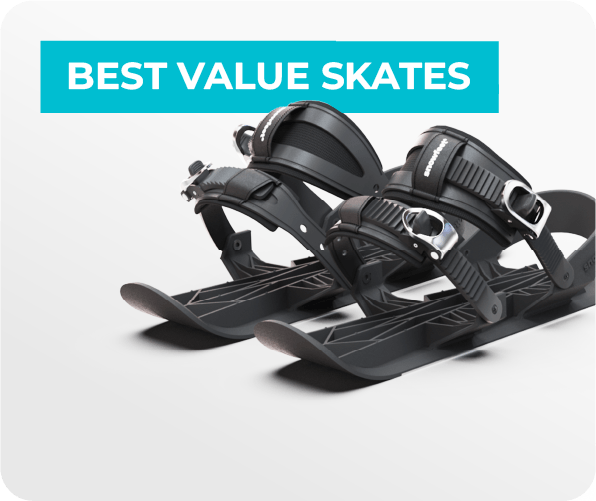



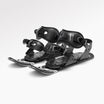
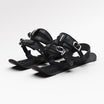
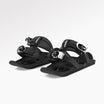
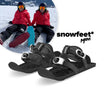

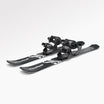

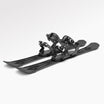
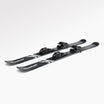






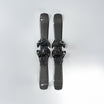

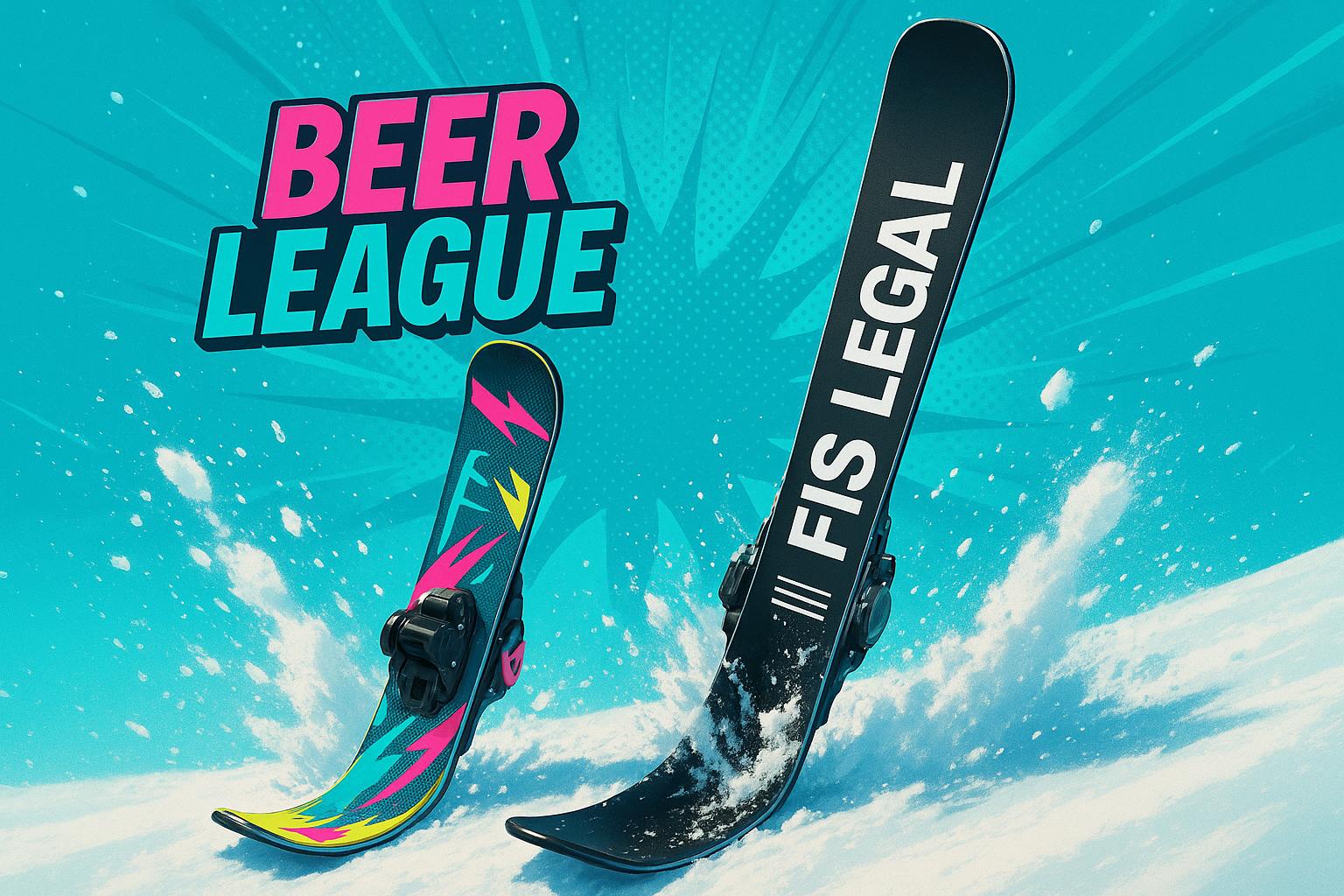
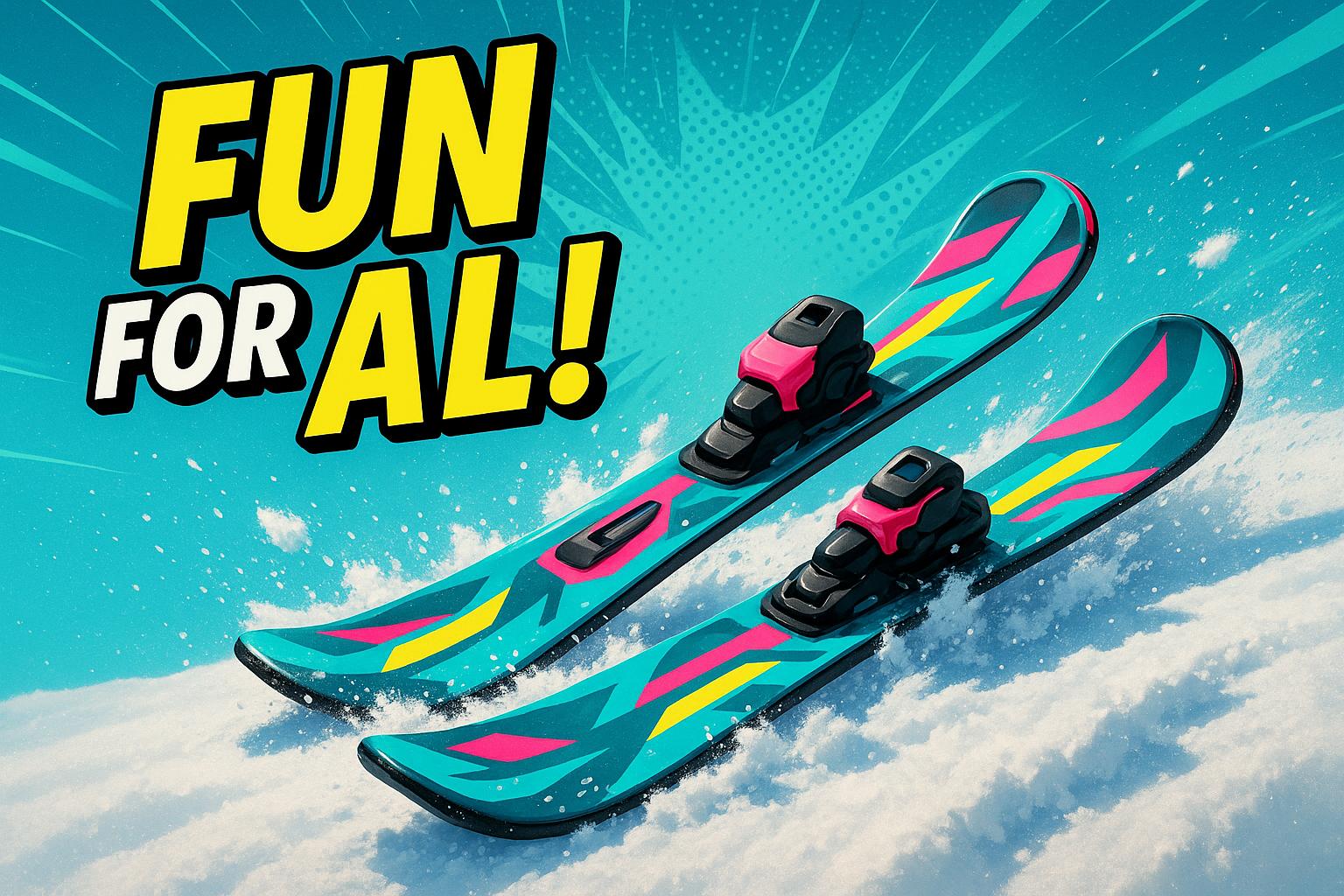
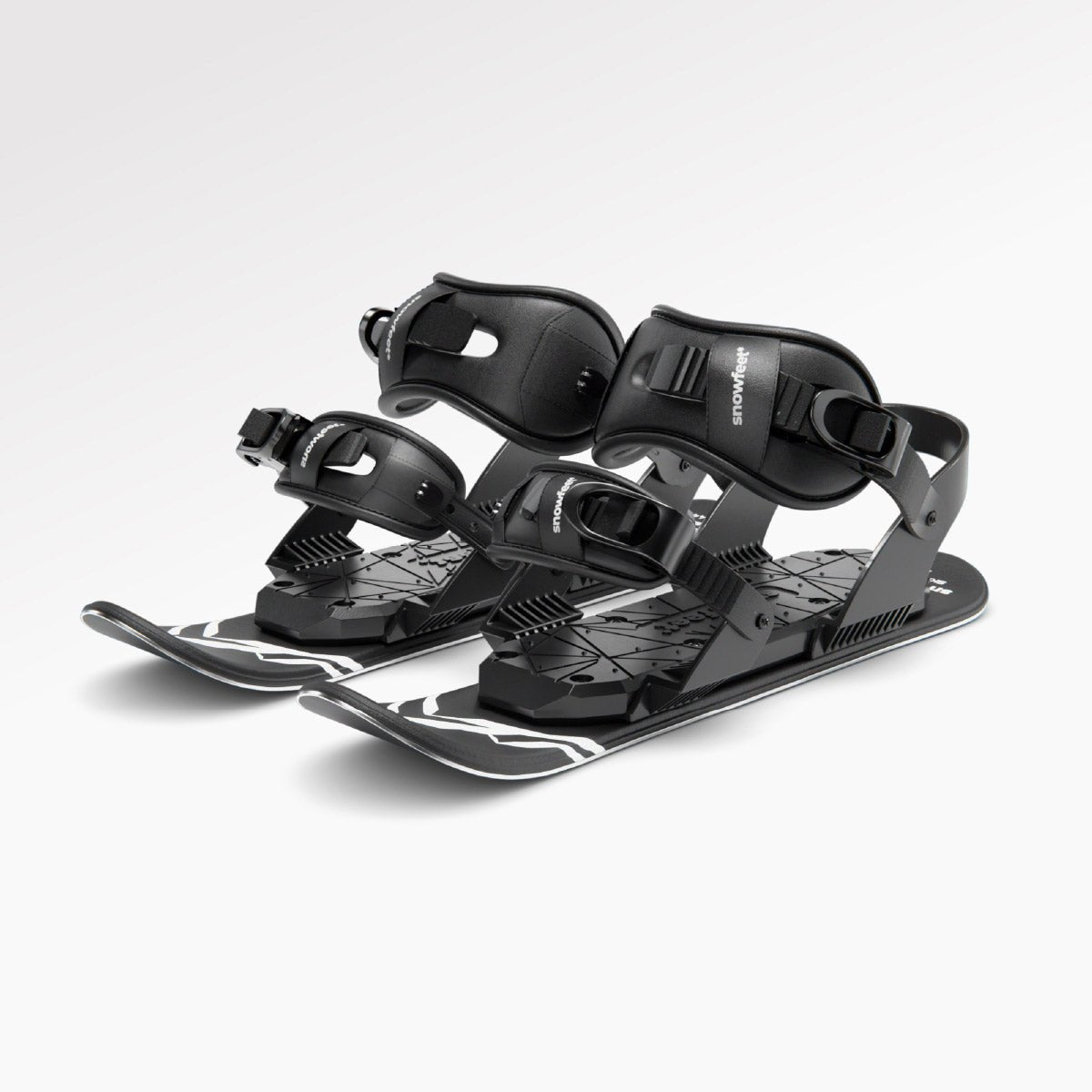
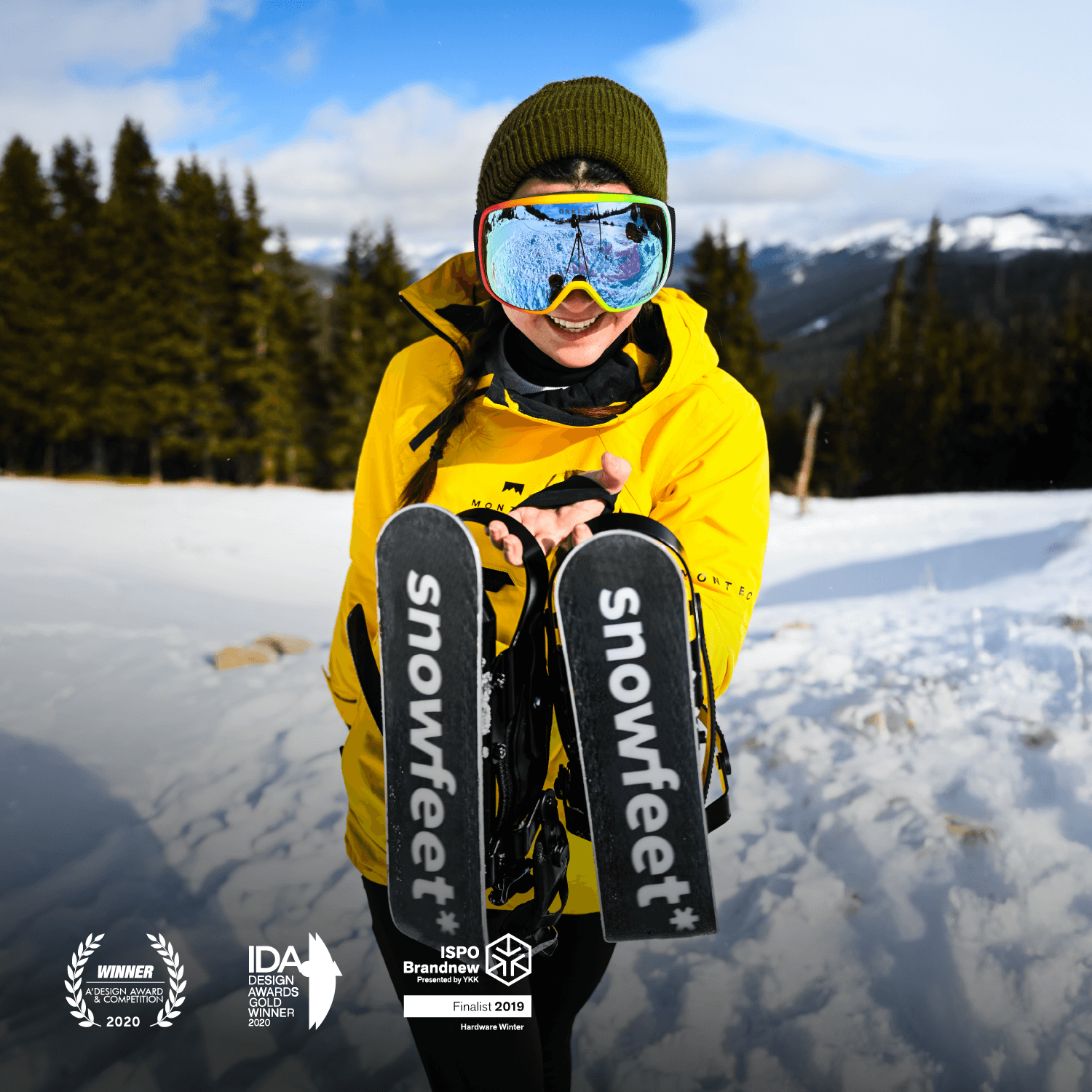
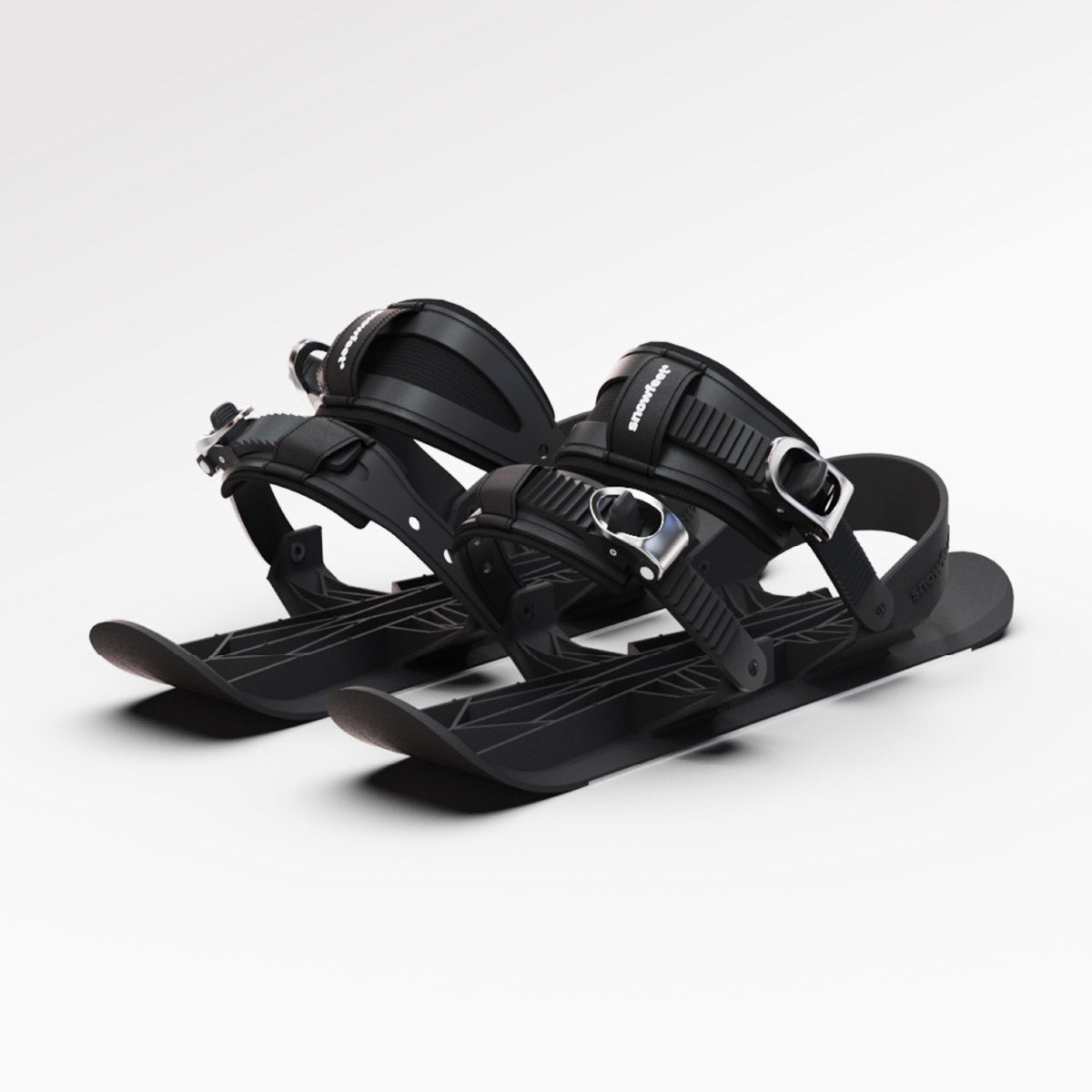

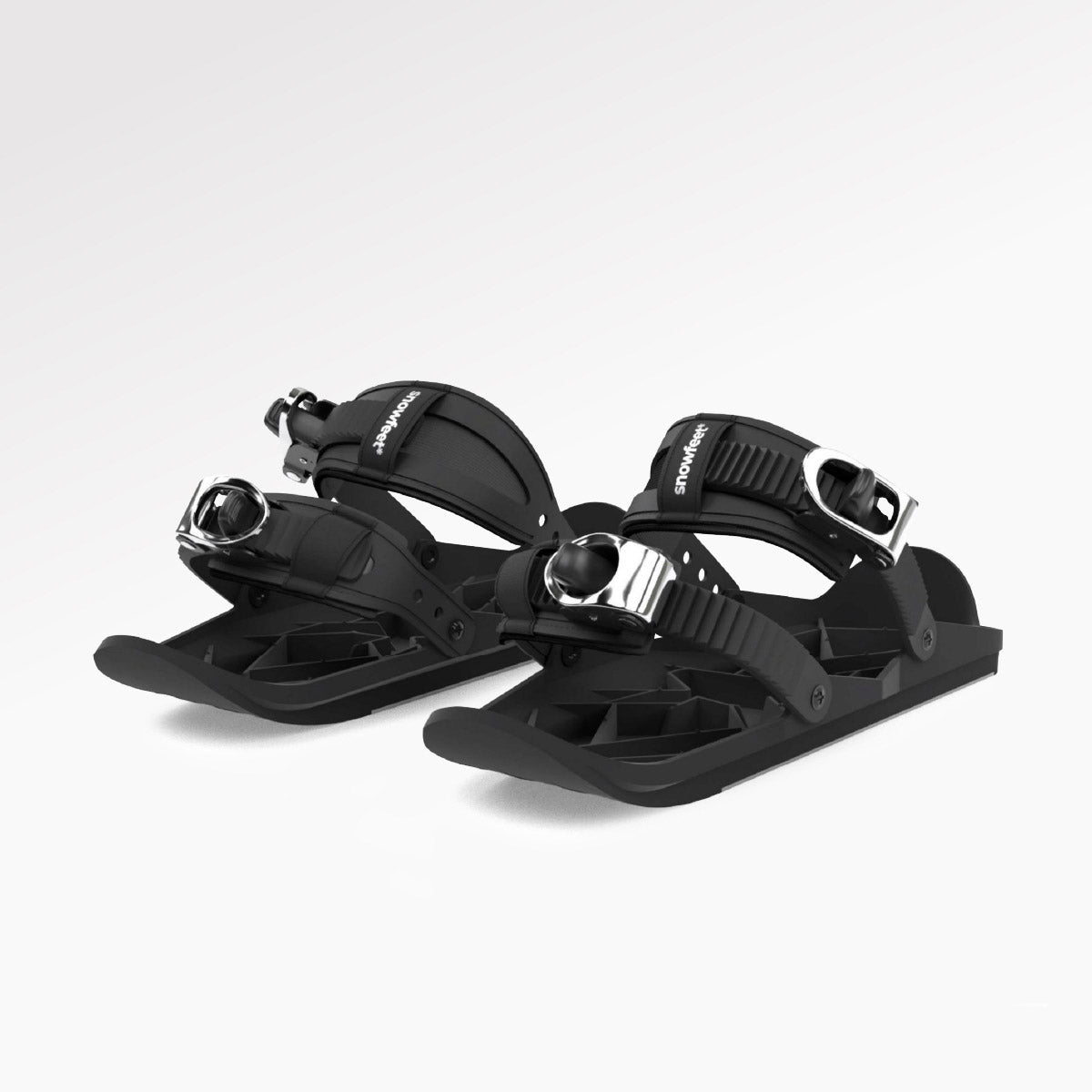
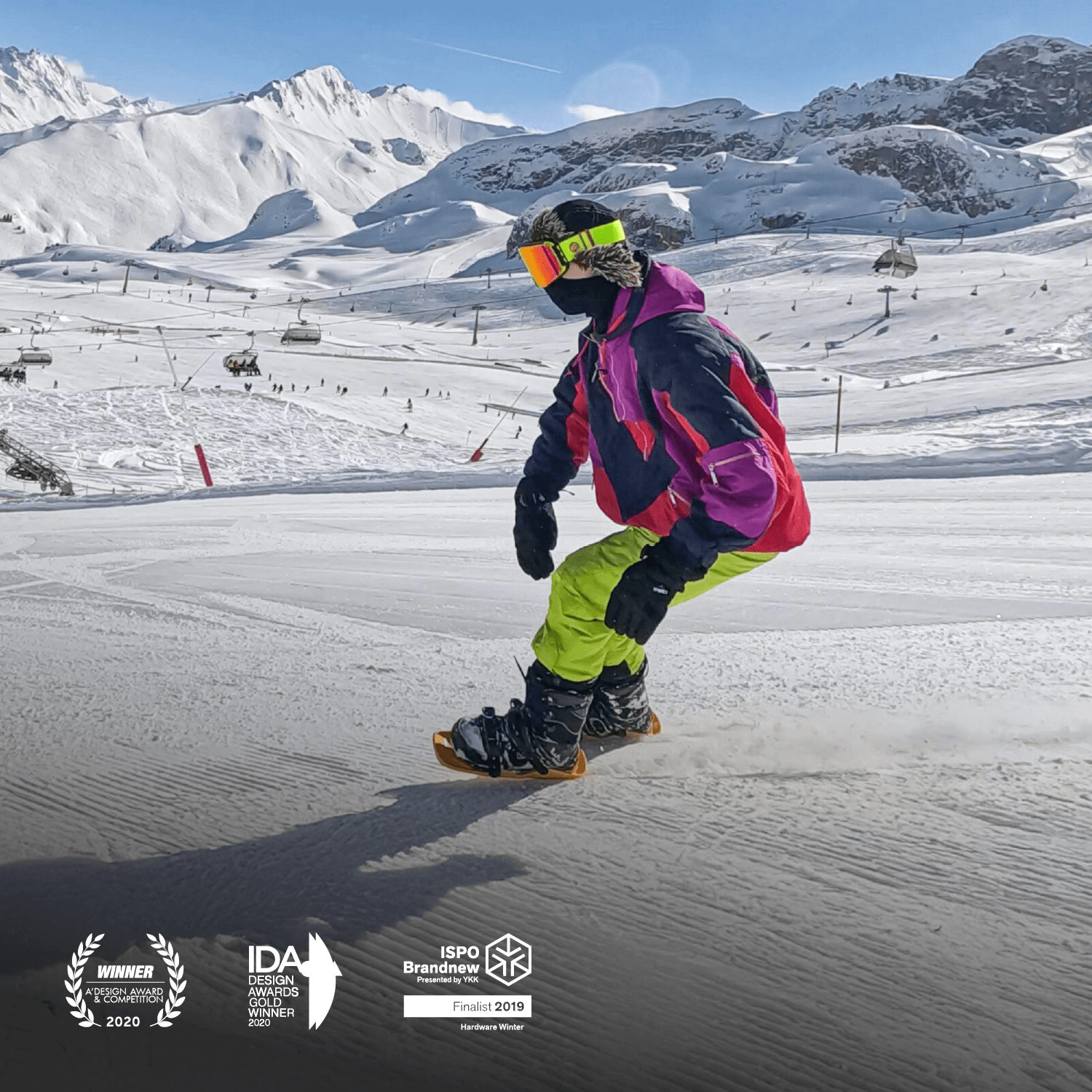


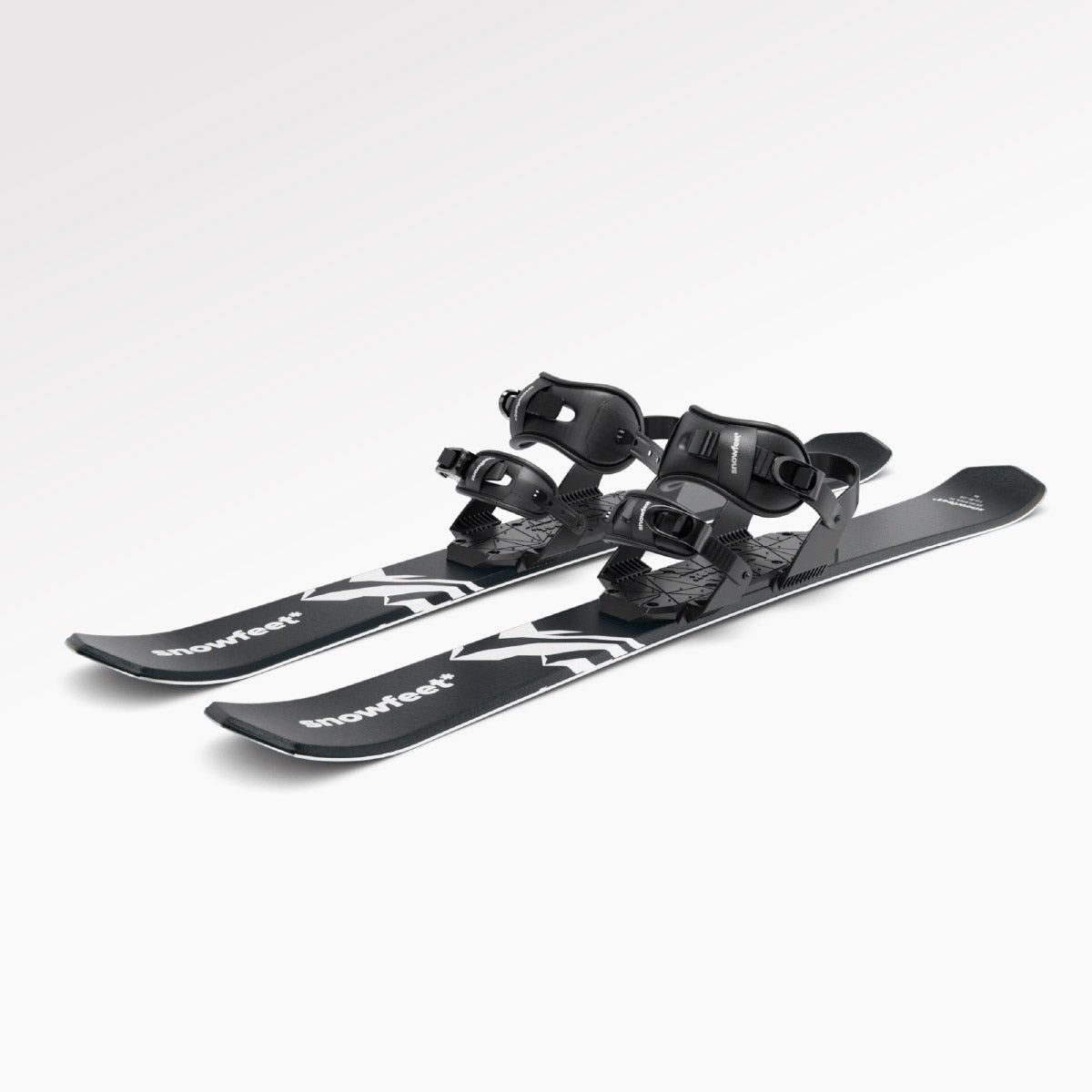
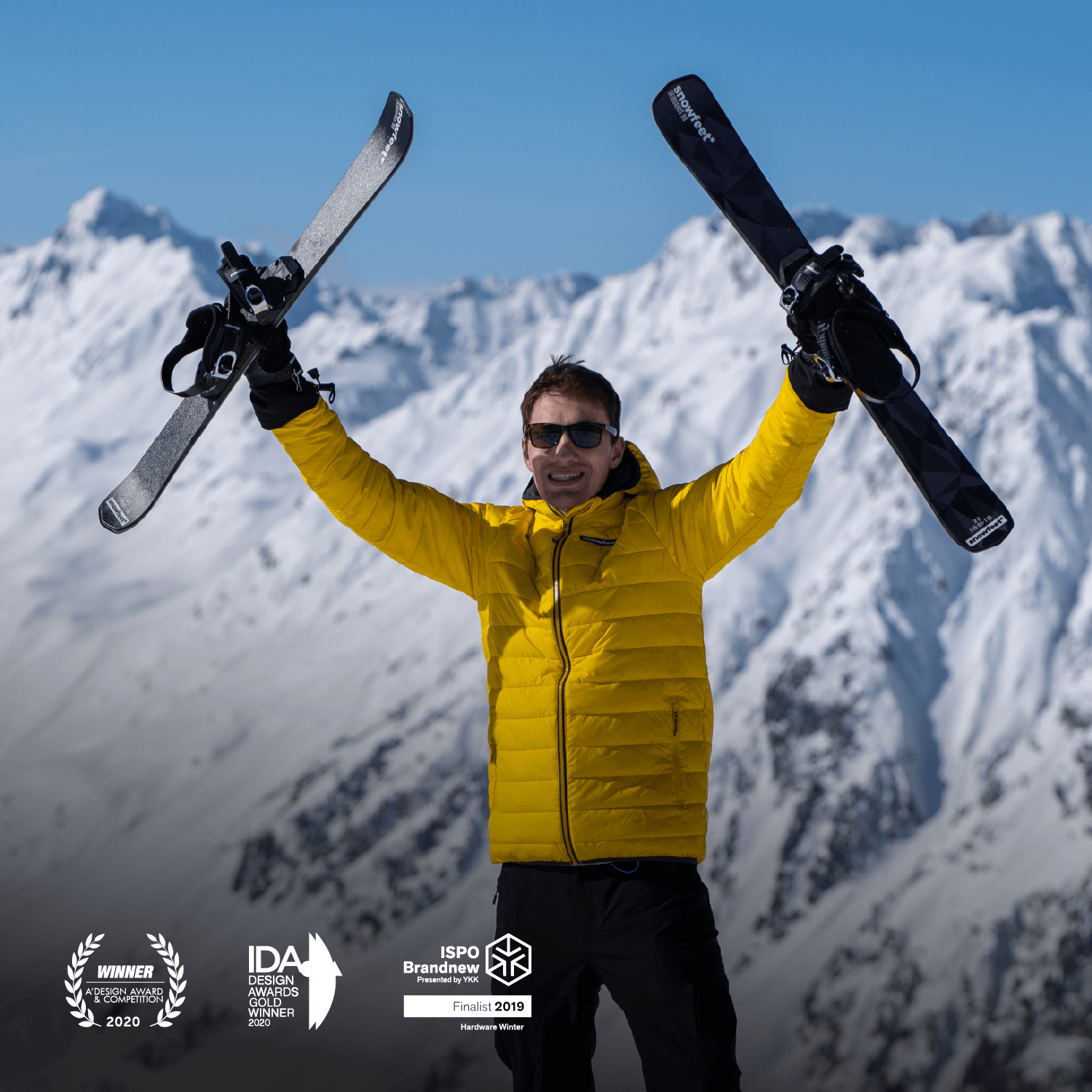
Leave a comment
This site is protected by hCaptcha and the hCaptcha Privacy Policy and Terms of Service apply.